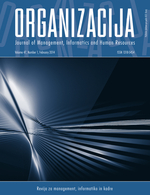Testing the Sustainability of Growth of the LJSEX in the January 2000 to May 2010 period
Abstract
In this paper we analyse the behaviour of the LJSEX, the main index of the Ljubljana Stock Exchange, in the period from January 2000 till May 2010. More precisely, we test for the presence of bubbles and antibubbles and try to determine whether or not a bubble could have been predicted (both the formation and the date of the bubble burst). Second, we also employ techniques used to model antibubbles to forecast the future behaviour of the LJSE index. Besides modelling index dynamics for the aforementioned period, we also seek to determine the factors that led to the bubble forming and later bursting. We find that the bubble could have been forecasted at least several months in advance. On the other hand, a very precise date of the crash seems harder to identify. By more closely analysing the interplay between interest rates, credit activity and the
LJSEX, we conclude that there is a clear connection between decreasing interest rates, increased credit activity and the formation of a stock bubble. If there is a clear correlation between the early phase of a bubble and increased credit activity of the banking sector, the link between the end of the bubble and the restriction of credit activity is less pronounced. By fitting the extended antibubble model from (Johansen 1999a) we obtain the values of parameters that give us some indication of the future behaviour of the LJSEX. Based on these results we conclude that in the next few years we are likely to experience a period of increased volatility with no clear increasing or decreasing growth pattern.
LJSEX, we conclude that there is a clear connection between decreasing interest rates, increased credit activity and the formation of a stock bubble. If there is a clear correlation between the early phase of a bubble and increased credit activity of the banking sector, the link between the end of the bubble and the restriction of credit activity is less pronounced. By fitting the extended antibubble model from (Johansen 1999a) we obtain the values of parameters that give us some indication of the future behaviour of the LJSEX. Based on these results we conclude that in the next few years we are likely to experience a period of increased volatility with no clear increasing or decreasing growth pattern.
Refbacks
- There are currently no refbacks.

